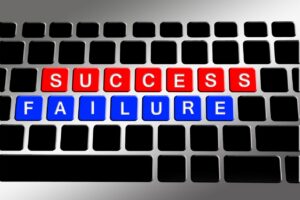A hybrid workplace is one that employs a combination of traditional office workers and remote employees. This setup has become more popular in recent years as technology has made it easier for people to work from home. While there are many benefits to this arrangement, there are also some challenges that must be faced in order to make it work long-term. In this blog post, we will discuss three of the most common challenges: employee work time, fewer team interactions, and time-sensitive deadlines.
Hybrid vs Traditional Workplaces
Traditional workplaces existed for many decades before the introduction of hybrids, which of course, became ubiquitous during the pandemic shutdown. At that time, businesses hurriedly transitioned from tradition to hybrid. Of course, this triggered a learning curb. And, some businesses experienced mostly smooth sailing. But, others struggled to make it work. Regardless of how it started, what’s unfolding or about to happen unleashes some unintended consequences.One thing is clear about the future of work: At least in the near term — and possibly for much longer — hybrid work arrangements are going to be the norm for many organizations, in industries ranging from tech to pharmaceuticals to academia. There are good reasons why many companies and employees are excited about this mix of in-person and remote work — and equally good reasons why many feel trepidation about the shift. —Harvard Business ReviewBusinesses always face challenges. From small to large, there’s no end to obstacles and issues. Going hybrid will solve some of those problems. Still, the transition and new normal will also breed new challenges. Fortunately, there are ways to cope and deal with those obstacles.
3 Long-Term Hybrid Workplace Challenges
The great thing about a hybrid workplace is that it offers flexibility, freedom, and lessens commute woes and expenses. But, it does create unique challenges that weren’t likely present before its establishment. So, if your business is transitioning into a hybrid workplace or it’s already been implemented, here are three of the most common challenges facing hybrid companies:- Employee work time. One of the biggest challenges faced by companies with a hybrid workplace is ensuring that employees are working the same number of hours. This can be difficult to do when some employees are in the office and others are remote. It can also be difficult to track employee time when they are working from home. In order to overcome this problem, managers need to have clear expectations about when their employees should be available for meetings or assignments and how long they are expected to work each day. This might include having regular check-ins with remote staff during normal business hours so everyone knows what is expected of them.
- Fewer employee team interactions. Another challenge faced by companies that have a hybrid workplace is that there are fewer opportunities for employees to interact with one another. For example, when people work from home they may not have as much time to talk about their day over lunch or exchange ideas in person during meetings. This can lead to feelings of isolation among employees which is never good for productivity levels. In order to overcome this challenge, companies need to find ways for employees to interact with one another even when they are not in the office. This might include using video conferencing tools or having regular team-building activities.
- Time-sensitive deadlines. A final challenge faced by companies with a hybrid workplace is that remote employees can sometimes have trouble meeting time-sensitive deadlines. For example, if someone is sick or has an unexpected emergency that requires them to be away from work for a few days then this could mean missing out on important projects which could lead to loss of revenue and customers. In order to avoid this problem, managers need to make sure they are clear about expectations when it comes down to deadlines so that employees know what needs to be done by when. This might include having regular check-ins with remote staff during normal business hours so everyone knows what is expected of them and how long they are expected to work each day.




